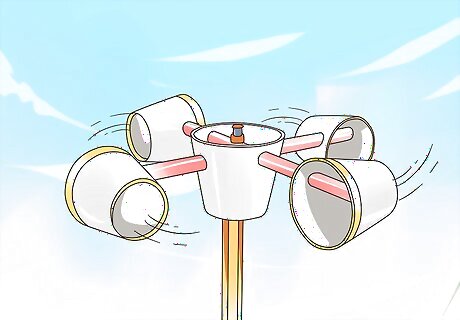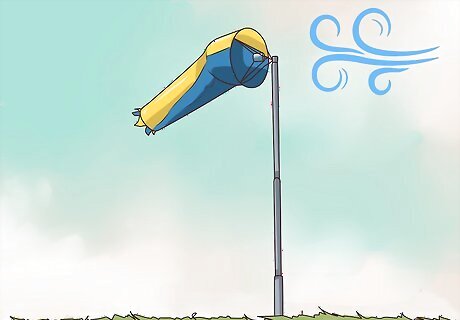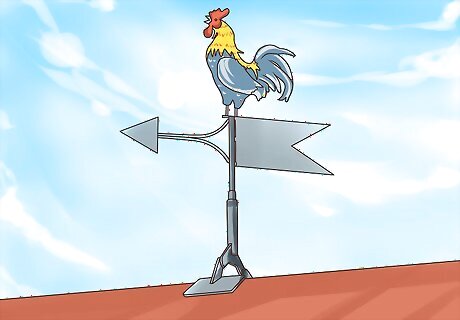
views
Feeling the Wind

Wet your finger. Stick your index finger down in water to get it wet. Hold your finger up and away from your body. The side of your finger that gets cool is the side that the wind is blowing from. If you put your finger in your mouth to get it wet (which works well when there is no water nearby), be sure that you get it wet all the way around. Closing your eyes eliminates the visual messages coming to your brain and allows you to focus fully on your other senses. This way, you will be able to concentrate on feeling the wind with your skin.

Turn your head. Turn to face the direction you think the wind is coming from. The skin on your face will be more sensitive to a light wind than somewhere like your hands. Keep turning until you feel that you are facing directly into the wind.

Listen to the wind. If you are facing directly into the wind, it should sound the same in both ears. You can turn your head left to right and listen to the wind. Keep repositioning your body until the wind sounds the same in both sides.
Watching Water

Watch the ripples. Look for a dark pool of water. Watch how the ripples flow over the water. These ripples are formed by the wind pushing the water and breaking its surface. The ripples will flow in the direction of the wind. If you're not near a large body of water, put out a pan or bucket of water. You should still able to see the wind rippling on the surface.

Look out to a horizontal plane. As you are looking out over the water, find a horizontal (left to right) stretch of water that is roughly 15 yards (14 m) wide. Observing the direction of this strip is a more accurate representation of wind direction than watching individual ripples. The strip will travel the same direction that the wind is blowing.

Determine wind patterns by watching the water from a boat. When detecting subtle variations in wind direction, such as on a sailboat, you should be looking forward and back. Watch how the wind is affecting the water in front of you by focusing on a horizontal stretch of ripples in front of you. Also, glance back behind you to see how the wind is behaving there. This allows you to observe changes in the wind directly rather than waiting for your boat to react. Whether you are looking forward or back, you will use the same technique of identifying a horizontal stretch and observing the ripples.
Utilizing Wind Devices

Tie tassels to an object. Perhaps the simplest of all wind monitoring devices is a tassel or piece of string. Tie a lightweight string or tassel to an object and let it dangle. As the wind blows, the string or tassel will blow right along with it. The wind is blowing in the direction that the tassel points.

Make an anemometer. You can make devices, such as an anemometer, to measure wind direction. These can be simple homemade devices, or complex precision tools. Either way, the anemometer cups the wind and spins, indicating both the direction and intensity of the wind.

Hang a wind sock. A wind sock is a device that has one large opening attached to a pole or base. The opening on the other end is much narrower. As the wind blows through the sock, it will turn to point in the direction that the wind is blowing. You can also hang up flags to get a sense of where the wind is blowing.

Install a weather vane. A weather vane is designed to point directly into the wind. One side of the weather vane will be a narrow, pointed end (usually resembling the tip of an arrow). The other end is made wider to catch the wind. As the wind blows, you can see the arrow point directly into the wind. You must put the weather vane on a sturdy base or pole. A lot of boats have an arrow installed on top of the mast—this is called a Windex, and it flips in the direction that the wind is coming from.
















Comments
0 comment